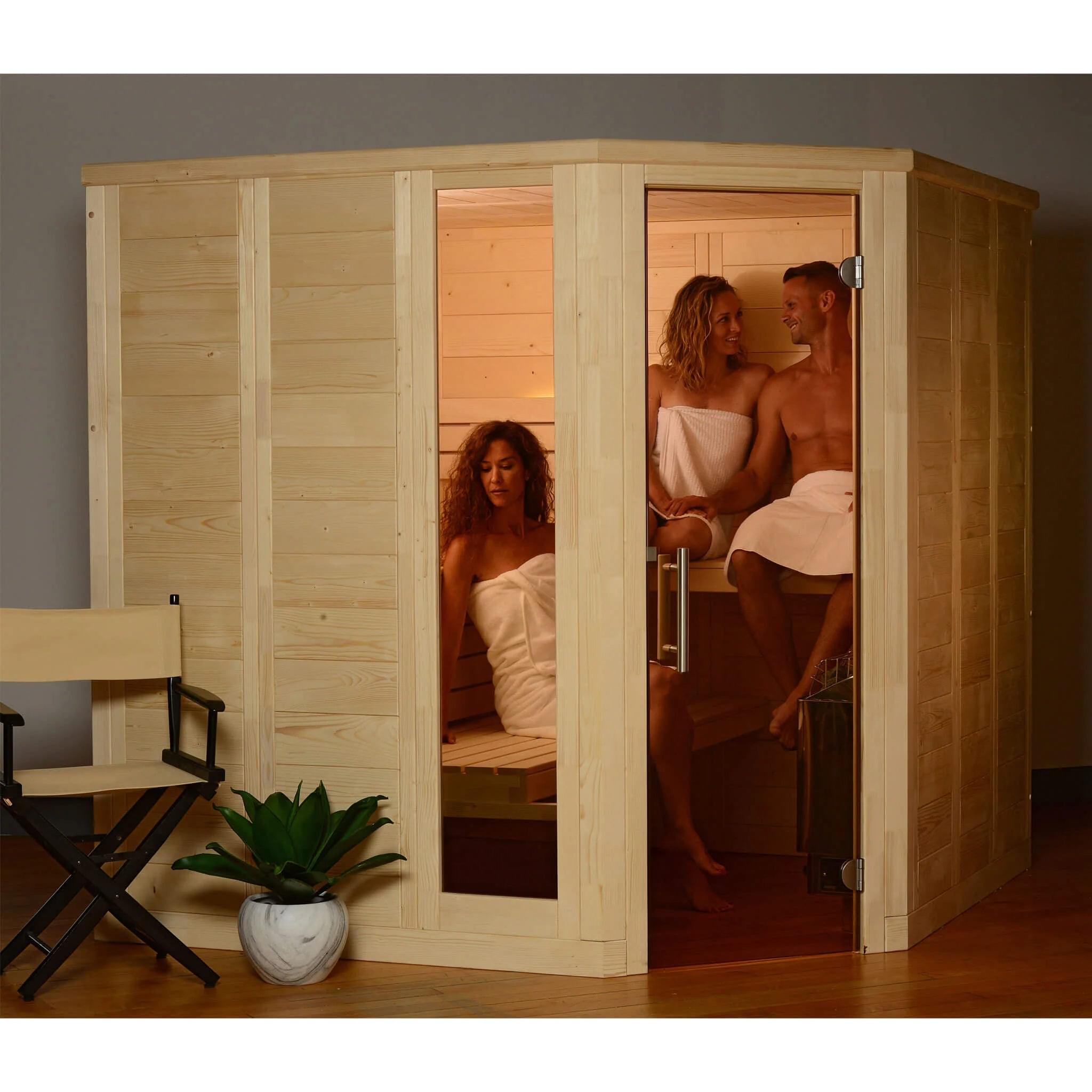Traditional Sauna Fundamentals Explained
Traditional Sauna Fundamentals Explained
Blog Article
Traditional Sauna Fundamentals Explained
Table of ContentsThe Main Principles Of Traditional Sauna Our Traditional Sauna DiariesThe 15-Second Trick For Traditional SaunaSome Ideas on Traditional Sauna You Need To KnowTraditional Sauna for Beginners
The majority of the weight lost in a sauna is water loss and is re-gained upon rehydrating. Nonetheless, certainly sauna can be an integral part of a healthy weight management program. To check out the distinctions between standard and IR saunas, I will certainly separate these right into proven, theoretical, and made differences.Hence, the best factor in the saunawhich is at the ceiling directly above the sauna heateris typically between 185 and 190 F. Claims that a typical sauna exceeds 200 F is simply not true and not applicable for electrical saunas sold in the United States. The temperature for a far-infrared sauna is normally established in between 120 and 140 F; nevertheless, unlike the standard sauna, the goal in and IR area is not to attain a high temperature.
As a result of this, the temperature distinction is practically pointless, because profuse sweating causes both sauna kinds, but the method of heating the body is different. In an IR sauna the bather will really feel warm and will sweat profusely, however at a lot lower temperature levels (Traditional Sauna). Thus, if the goal is to invest longer periods of time in the sauna, the IR sauna is a great option
When a traditional sauna has been appropriately warmed, the sauna walls are cozy, the air temperature level has actually accomplished set temperature and the rocks are incredibly warmed. As an intriguing side note, the warmed wall surfaces and the rocks are giving off far-infrared heat, incorporated with the warmed air, to produce an "wrapping up warmth".
The Ultimate Guide To Traditional Sauna

When the high temperature is achieved, the aspects cycle on and off to preserve the heat. The majority of typical sauna customers appreciate pouring water over the rocks to create heavy steam to increase sauna humidity degrees. The advantages of pouring water over the rocks include: making the area a lot more comfy, moistening the nasal flows, and allowing the usage of aromatherapy by mixing vital oils with the water.

When the power goes into the body, it causes the body temperature level to raise and ultimately results in sweating. In an important site infrared sauna it is necessary for the emitters/heaters to continue to be on practically constantly. Given that there is no mass of rocks to retain heat, the sauna will certainly cool if the emitters shut down.
As discussed over, the sauna bather in an infrared area wishes to position himself in front of running emitters to obtain optimal benefit from the heat. The heating time for both areas can be extremely different, depending upon how the spaces are utilized. For a typical sauna, a bather needs to permit 30-40 mins for the space to attain a preferred temperature level and to correctly pre-heat the rocks.
5 Simple Techniques For Traditional Sauna
A well built sauna will commonly achieve a temperature of 150-160 F in regarding 30-40 mins. For hotter temperature levels, the room may require to warmth for a longer duration.

Typical saunas have a tendency to be bigger (thus make use of more electrical energy) than infrared saunas, although conventional saunas are absolutely available in one and 2 person dimensions. For a two-person conventional sauna, 5x6 or see this here 5x7 size is most popular. The top bench can easily seat 2 or three individuals and is additionally long sufficient to exist down throughout the sauna session.
Not known Factual Statements About Traditional Sauna
The average expense per kWH of electrical power in the united state is approximately $0.11, so a 4.5 kW heater will certainly set you back approximately $.50 to run for one hour, if the my review here heating unit runs constantly for one hour. Generally a sauna heating system will certainly run for 75% of the very first hour and 50% of subsequent hours on given that the aspects cycle once the set temperature is accomplished.

There is a seldom reviewed difference in the social experience between the 2 spaces. While our culture has actually lost some of the social advantage of the standard sauna experience, it can be very socially rewarding (Traditional Sauna). From family members time in the sauna, to heart-felt conversations with loved ones, to sauna partiesthe typical sauna experience can cause intimate socializing
Not known Facts About Traditional Sauna
A lot of greater end infrared rooms include colored light therapy, noise systems and full-glass fronts.
Report this page